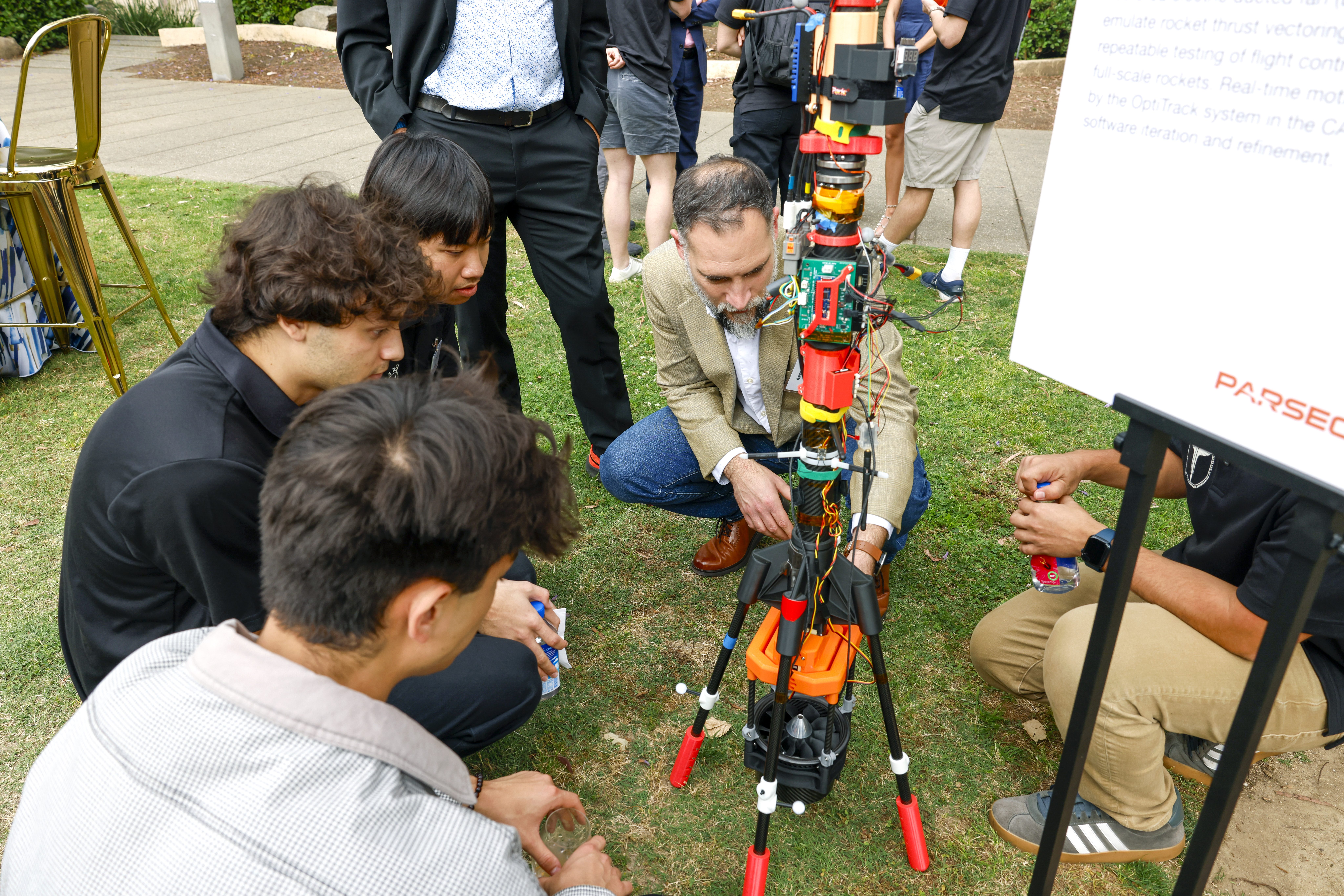Our Subteams
PARSEC is split into seven different subteams focused on different aspects of running a successful team. The subteams allow easier communication between different projects and facilitates a culture and an environment of ownership.

TVC/Mechantronics
The Thrust Vector Control (TVC)/Mechatronics team is a multidisciplinary group responsible for developing flight and test systems capable of steering the lander by directing its thrust. We are engineering the steering system of a ship, except instead of rudders, we use rockets! Projects include both ground-based and flight-ready TVC systems, along with the supporting hardware, software, electronics, and test infrastructure needed to make them work.
Icarus Design
Icarus Design focuses on preliminary structural design, including the airframe and critical landing systems. They lead efforts in developing innovative solutions like the landing legs to ensure rocket stability and recovery after launch.
Test Stand
The Test Stand team is responsible for the upkeep of our original test stand, Monolith, and development of our new, higher capacity test stand, Megalith. Monolith can operate at pressures up to 450 psi to statically validate our rocket motors; we have tested Monolith twice with liquid nitrogen, including full sensor integration. Megalith is designed to improve upon the Monolith design and increase our testing capacity up to 4000 psi, allowing us to test more powerful motors. The test stand team allows students to get hands-on experience with the complete rocketry life cycle, from new designs to validation processes. Test stand operation also teaches members the necessary safety procedures and test procedure best practices.
Prop
The Propulsion team, or Prop, designs and fabricates the ignitors, injectors, and engines that provide thrust for our rockets. Our team is currently developing two RP-1 and liquid oxygen fueled rocket motors. These motors named Rudy and Harold are designed to provide 2 KN of thrust to our self lander, Icarus. These projects are both intended to serve as research platforms for investigating the effects of injector and thrust chamber design on motor performance, reliability, and reusability. These projects provide an opportunity for students to utilize industry standard design, analysis, and manufacturing tools including ANSYS, CNC machining, and Metal 3D Printing.
GNC
The GNC (Guidance, Navigation, and Control) team develops advanced simulations and software to steer and stabilize the rocket during flight. Daedalus and Daedalus2 are custom-built drones designed as controls testbeds for our Icarus self-landing rocket. Both drones run on a modified version of PX4 Autopilot, which is integrated with Gazebo, a rigid body simulation software. This pipeline allows us to iterate in sim and be confident the results will carry over to the real world, since the same controls code runs in both cases. After running sims, we flight test in the Aerodrome of Caltech's Center for Autonomous Systems and Technologies (CAST). The CAST Aerodrome's optical tracking system allows us to debug our state estimation with an external source of ground truth, and the room's vertical fan array allows us to test our control systems repeatably in a variety of adverse wind conditions.
EE/Systems
The Systems team focuses on electronic integration, including PCB design, avionics, GUI development, and CAN BUS communication protocols. They build the nervous system of the rocket, connecting hardware and software into a unified, operational platform.
Business
The Business team oversees the operational and external functions of PARSEC. Responsibilities include financial management, sponsorship development, outreach, merchandise, and administrative coordination. Members are able to get hands-on experience with professional project management tools like Jira, learning how to organize deadlines, events, and big-picture goals. The Business team ensures all subteams are on track to meet objectives, while strengthening the club’s overall impact.